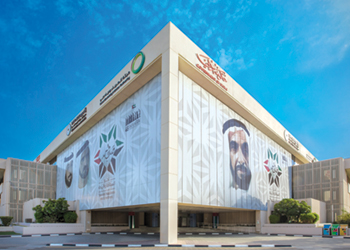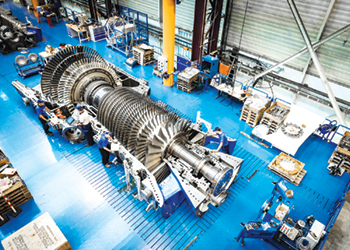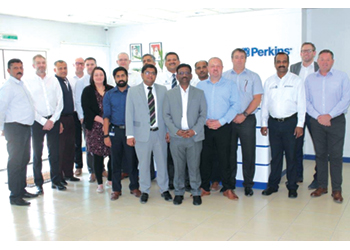
 Power savings is a top priority for Dewa
Power savings is a top priority for Dewa
The decade-long savings achieved in Dubai could power approximately 305,000 apartments for a year and meet the water requirements of 241,000 residential units annually, too
Dubai Electricity and Water Authority (Dewa) has announced that it had registered total savings of about $327.7 million (Dh1.2 billion) over the past decade as a result of its efforts to conserve electricity and water.
The utilities regulator further revealed that cumulative savings of around 2 Terawatt hours (TWh) of electricity and 7.4 billion gallons of water were achieved between 2008 and 2018.
The biggest savings in electricity was by Dubai’s commercial sector, amounting to 1.2TWh, a 10 per cent saving in consumption between 2008 to 2018, with a 28 per cent reduction on water usage. The industrial sector achieved the second highest reduction for electricity usage in the emirate with around 15 per cent for power and 29 per cent for water.
Meanwhile, educational institutions achieved the biggest savings on water consumption at 1.3 billion gallons – a 24 per cent saving over the 10-year period – as well as 10 per cent for electricity. The residential sector registered an 18 per cent reduction in electricity usage and 27 per cent for water.
Government and semi-government organisations accounted for a 12 and 21 per cent reduction in electricity and water usage, respectively, over the past decade.
The decade-long savings achieved in Dubai could power approximately 305,000 apartments for a year and meet the water requirements of 241,000 residential units annually, too.
Energy efficiency has become an integral part of clean energy strategies in the region, with the UAE one of the first countries to have targets in place to achieve electricity and water savings. This comes at the height of challenges associated to population growth, increased economic activity and high consumption rates that are unsustainable in the long run.
According to Business Monitor International, a sharp increase in annual power demand throughout the country is expected over the period 2019-21, with an anticipated average annual increase in consumption of 5.6 per cent.
To meet this rising demand in a sustainable manner, the UAE is increasingly focusing on coming up with a balanced energy mix. The country is in a unique position to leverage its resources to advance the economic, social and environmental benefits of clean energy.
Both Abu Dhabi and Dubai have set ambitious targets for increasing renewable energy generation. Abu Dhabi government has set a target that by 2020 at least 7 per cent of power generation capacity should be renewable energy.
The Government of Dubai established the Dubai Supreme Council of Energy (DSCE) in 2009 which oversees all aspects of energy in the emirate and developed the Dubai Integrated Energy Strategy 2030 to drive energy decarbonisation and ensure efficient use of energy. In January 2015, Dubai announced a revision of its targets for the share of renewable energy in the total energy mix to 7 per cent by 2020 and 15 per cent by 2030.
Today, most of the country’s portable water, or 42 per cent of the total water requirement, comes from some 70 major desalination plants, which account for around 14 per cent of the world’s total production of desalinated water.
In 2012, the UAE had an installed desalination and groundwater capacity of 7.2 million cubic metres (m3) per day which has expanded by as much as 35.8 per cent since 2008.
Desalination is a major component of any future water planning in the MENA region. There are several desalination options available to a country when considering how to address the supply and demand gap. The main options within the GCC context all involve water separation and include thermal and electrical distillation. All of these processes work on the basis of evaporation of the saltwater solution and collection of pure water when condensation forms as the vapour cools.
But the most expensive element in all three technologies is the energy component, accounting for one third to 55 per cent of the operating costs for the plant. The cost of thermal desalination depends entirely on the cost of fuel and total MENA electricity demand for desalination purposes is expected to triple by 2030 to 122 TWh by 2030 according to a 2013 report by the International Renewable Energy Agency (IRENA).
This is a trend that is highly unsustainable if we are to close the water supply-demand gap," says Saeed Mohammed Al Tayer, MD & CEO, Dubai Electricity and Water Authority (Dewa). There is need for urgent action, not only from governments in the region, but from the private sector as well."
Thermal technologies made sense while fuel was cheap but fuel subsidies are becoming a major problem in the region and governments are under pressure to phase them out with a resultant increase in fossil fuel prices.
The price for natural gas, the energy feedstock for many of these desalination plants, has been kept at or below $1.00/MMBtu in most of the GCC countries. This is compared to an average of $4.00 to $6.00/MMBtu in the USA, even in the midst of a shale revolution, and between $12.00 to US$16.00/MMbtu in Europe and Japan.
Gas shortages are becoming increasingly problematic within the region especially in Egypt, Oman and even KSA. Natural gas is the dominant source of power generation in the Middle East and demand for natural gas in the GCC is likely to rise more than 50 per cent, from 256 billion cu m in 2011 to 400 billion cu m in 2030.
The rising levels of fuel uncertainty in the region make the case for more renewable energy projects in the region to diversify power generation sources," says Ivano Iannelli, CEO, Dubai Carbon. This situation along with the growing desire to be perceived efficient will open up more business prospects to providers of renewable energy technologies across the GCC."
Although there are some small projects completed in the Mena region, such as the solar desalination plant in Al-Khafji Saudi, a PV RO plant and the solar desalination pilot scheme in UAE, less than 1 per cent of the desalination capacity worldwide uses renewable energy sources. Most of this is solar thermal followed by solar PV and wind.
Even without the level of investment in research and development that the industry is calling for, there is growing evidence to show that the costs of renewable desalination are very close to competing with fossil fuels even today," says Pierre Pauliac, Middle East’s CEO at Suez.
Dubai’s investments in energy efficiency totalled $136.7 million by 2017, according to a report published by the Regulatory and Supervisory Bureau (RSB). The emirate spent $68 million on energy efficiency projects in 2017, which is a third higher than the corresponding spend in 2016. These developments are expected to achieve electricity savings of 21 per cent, and water savings of 31 per cent.
We have a plan and target to retrofit a total of 30,000 buildings - a target of 2,000 per year. No other city has undertaken such a challenging target, but we have a path, a goal, and a plan," says Ali Mohammed Al Jassim, CEO, Etihad ESCO.
Solar is already being used in various applications such as pumping as a way to tame operational costs and enhance efficiency. For instance, Grundfos, a pump specialist company has developed a new solar energy solution for irrigation pumps designed to cut water usage by 30 per cent.
As technology gets smarter and more innovative, huge gains, both for the environment and operating costs, can result from replacing or upgrading one simple, integral component found in every type of agricultural operation - irrigation pumps," says Peter Busch, business development manager, Grundfos.
Regional governments and policymakers have taken cognisance of the situation and are taking drastic steps to promote efficient water use on the demand side through increased usage tariffs and removal of subsidies.
When making changes to tariffs, we have to consider what is in the customers’ best long-term interests. As such, placing a value on our precious resources and encouraging sustainable use is very much consistent with this consideration," says Saif Saeed Al Qubaisi, former director general at the Regulation and Supervision Bureau (RSB) of Abu Dhabi, now folded into the Department of Energy (DoE). It is for such reasons that we have launched a range of initiatives targeting users and educating them about conservation."
As a result, DoE has been working to change consumption patterns and drive conservation through its Powerwise and Waterwise initiatives, by combining research and education to equip residents, businesses and the government of Abu Dhabi to make wise decisions about the use of water and power.
In the coming years, the GCC will implement steps towards transformation of water use in agriculture, and industries will have to demonstrate water efficiency through recycle and reuse on the supply side.
Governments are seeking innovative water technology solutions to conserve resources, enhance water production, and manage demand. 70 per cent of the world’s water resources are used in the agricultural sector and in the MENA region alone the figure is close to 85 per cent.
In the UAE, the average UAE resident uses 550 litres of water compared to the international average of 170-300 litres of water per day. As water scarcity increases across the region, there is an onus on businesses and governments to seek out smarter solutions.
The market for water and wastewater treatment equipment in the GCC was estimated at $2.2 billion in 2017 and is expected to grow at a compound annual growth rate (CAGR) of 10.6 per cent to reach $4 billion over the coming years.
We are working with governments and municipal authorities on better ways to increase water re-use especially now that the requirements for irrigation are rising amid population growth. Re-using water will ultimately bring down the cost of irrigation while guaranteeing sustainability," says Vincent Chirouze, managing director for Africa, Xylem.
One of the most important steps towards improving electricity diversification and conservation in the GCC is to develop smart grid and smart metering roll-out under the overall umbrella of demand side management. Smart metering solutions are already gaining uptake, with companies such as Diehl Metering signing lucrative deals to replace all old meters with ones that are more intuitive.
It is estimated that GCC countries can save up to $10 billion in infrastructural investment by 2020 through the use of smart grid, which optimises supply and demand by using information technology to provide a two-way flow.
Recently, Dewa unveiled a five-point strategy as part of a government commitment to cut carbon emissions by 16 percent by 2020. The Dubai Supreme Council of Energy launched the Carbon Abatement Strategy to cut the emirate’s carbon footprint. This in turn is part of the broader Dubai Clean Energy Strategy 2050, to develop production of renewable energy over the coming decades.
Dewa’s five-point strategy comprises five strands: infrastructure, legislation, funding, building capacities and skills, and developing an environmentally-friendly energy mix.





































































